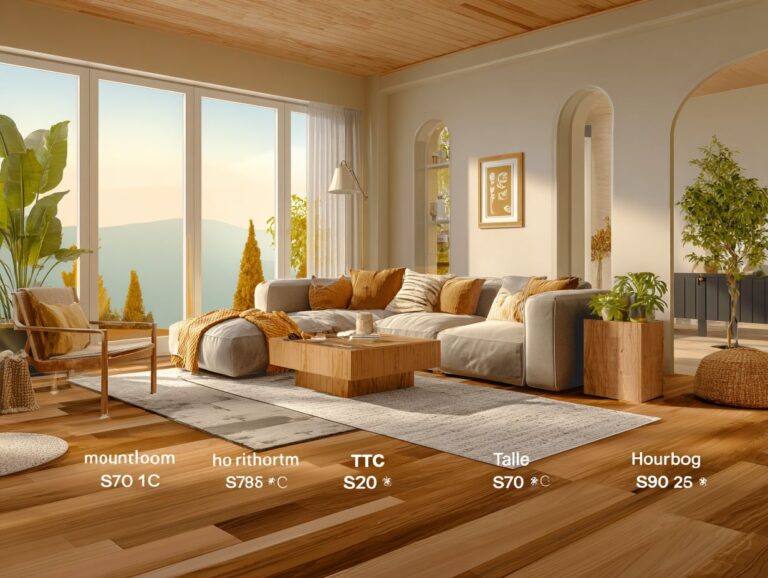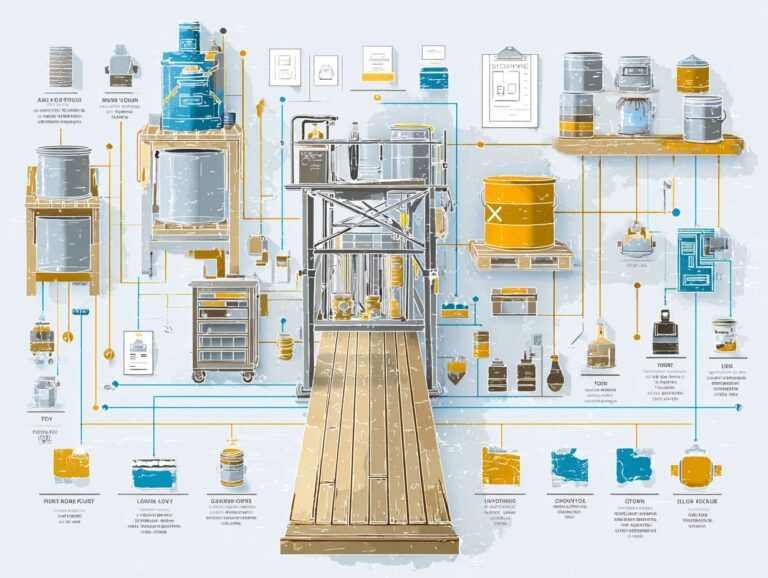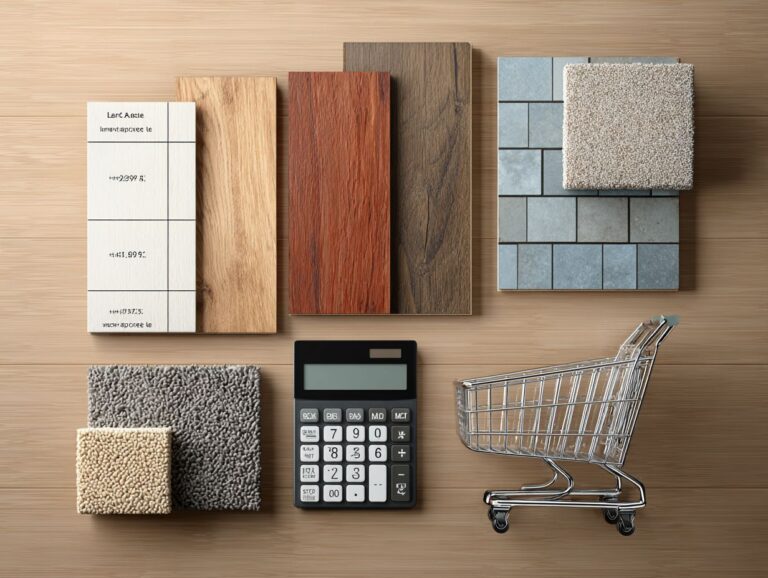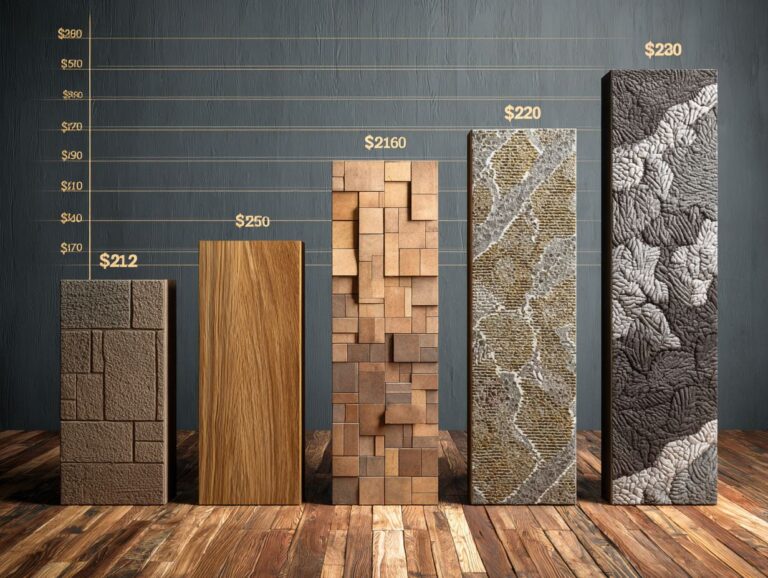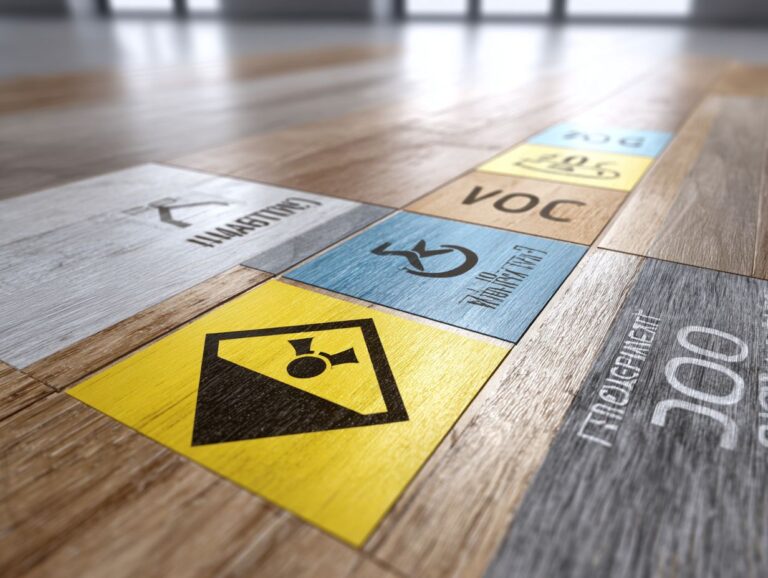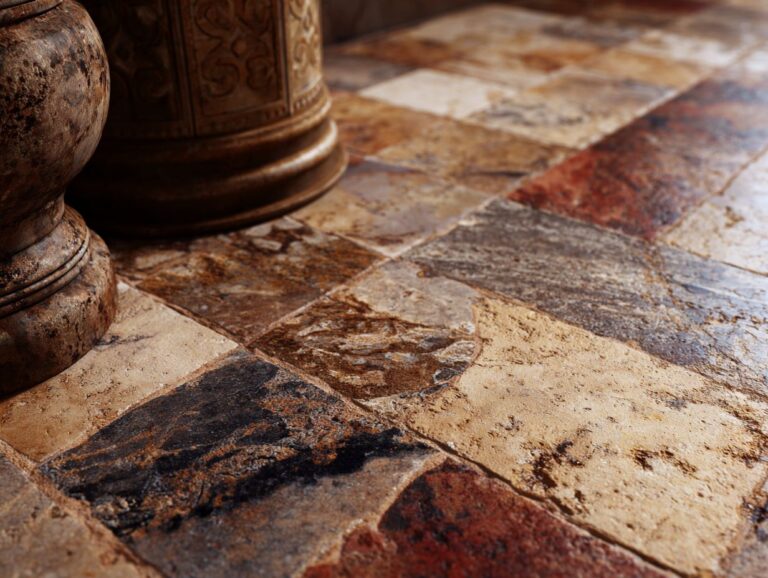Luxury Vinyl Plank (LVP) vs Luxury Vinyl Tile (LVT) Guide
Choosing between Luxury Vinyl Plank (LVP) and Luxury Vinyl Tile (LVT) can be difficult for those interested in home renovation, as both are favored options. Both options offer stunning aesthetics and durability, but they cater to different styles and needs. This guide looks at the main differences between Shaw Floors’ LVP and LVT, helping you choose the best option for your flooring project.
Key Takeaways:
Contents
- Key Differences Between LVP and LVT
- Durability and Maintenance
- Cost Comparison
- Comfort and Sound Insulation
- Environmental Impact
- Vinyl Flooring Market Analysis
- Market Expansion and Information: Increase in Market Worth
- Market Expansion and Details: Area Market Proportion
- Market Expansion and Information: Effects of Construction
- Recyclability and Sustainability
- Indoor Air Quality Considerations
- Choosing the Right Option for Your Space
- Final Thoughts
- Resources for Further Reading
- Frequently Asked Questions
- What is the difference between Luxury Vinyl Plank (LVP) and Luxury Vinyl Tile (LVT)?
- Which is more durable, LVP or LVT?
- Can LVP and LVT be used in all areas of the home?
- Which is easier to install, LVP or LVT?
- Are LVP and LVT low maintenance options?
- Is there a significant price difference between LVP and LVT?
What is Luxury Vinyl Plank (LVP)?
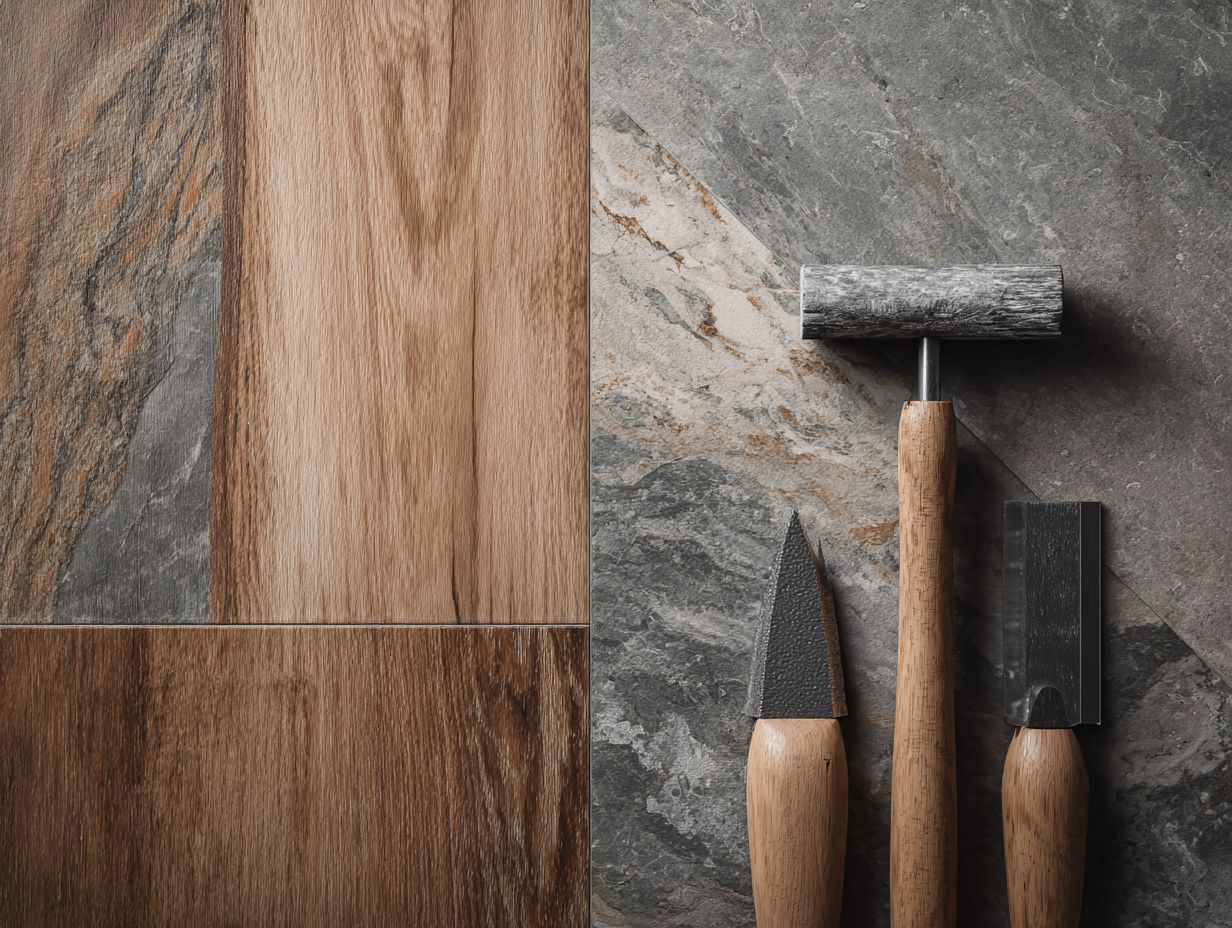
Luxury Vinyl Plank (LVP) is a synthetic flooring option designed to mimic the look of natural wood while providing durability and ease of installation.
LVP usually has a thickness between 5mm and 8mm, which works well for homes and businesses. The thicker options, like 8mm, offer increased durability and sound insulation, ideal for high-traffic areas.
Notably, LVP is water-resistant, allowing it to excel in moisture-prone spaces like kitchens and bathrooms. When selecting LVP, look at the wear layer thickness too. A 20 mil wear layer provides strong protection against scratches and dents, making it a durable option.
What is Luxury Vinyl Tile (LVT)?
Luxury Vinyl Tile (LVT) is a flooring choice that resembles natural stone and ceramic tiles, but feels softer to walk on.
LVT is composed of multiple layers, including a wear layer for durability, a printed design layer for aesthetics, and a backing layer for comfort. This design makes sure it can handle a lot of people walking through while still feeling cozy and welcoming.
Design options are diverse, featuring embossed textures that mimic the depths and grains of real wood or stone. It works well for both homes and businesses, offering both style and practicality.
Key Differences Between LVP and LVT
Knowing the differences between LVP and LVT is important for choosing the right flooring because both have features that fit particular needs.
Material Composition
Both LVP and LVT are primarily made from Polyvinyl Chloride (PVC) but differ in their core construction, impacting durability and performance.
LVP often uses Wood Plastic Composite (WPC), which provides a softer surface and better sound insulation, making it suitable for homes. In contrast, LVT often uses Stone Plastic Composite (SPC), which offers improved stability and moisture resistance, ideal for active commercial spaces.
The thickness of the wear layer is important; thicker layers (20 mil or more) are better at resisting scratches and dents, which helps the floor last longer.
For instance, if aesthetics and comfort are your priority, opt for WPC; but for toughness in busy environments, SPC is the better choice.
Appearance and Design Options
LVP and LVT offer many design choices, allowing homeowners to pick styles that match their interior design.
Luxury Vinyl Plank (LVP) mimics hardwood with a softer touch, while Luxury Vinyl Tile (LVT) replicates stone and ceramic finishes. Both materials come in various textures and colors.
Brands like Shaw Floors provide embossed designs that make the floors look more realistic. Mohawk offers LVP in different widths, which lets you create distinctive layouts.
When choosing, think about the finish and texture-smooth finishes usually appear modern, while embossed ones can feel cozy, fitting traditional spaces well. This choice affects the feel of your home.
Texture and Feel
The texture and feel of luxury vinyl play a significant role in comfort underfoot and overall user experience.
Luxury vinyl tile (LVT) features an embossed layer that closely mimics the natural texture of wood or stone, enhancing both aesthetics and tactile comfort.
For residential use, LVT offers a cushioned feel, ideal for spaces like living rooms and kitchens where people stand for long durations. In contrast, commercial options often prioritize durability, providing a firmer surface better suited for high-traffic areas like retail or office settings.
When selecting LVT, consider products that offer a thicker wear layer, such as 20 mil, which provides added resilience for varying usage demands.
Installation Methods
The installation methods for LVP and LVT vary, affecting ease of use for DIY enthusiasts and professionals alike.
LVP (luxury vinyl plank) often comes with a click-lock system, making it simple for DIY projects. You can install the planks without glue, and it typically takes 4 to 8 hours for a standard room.
On the other hand, LVT (luxury vinyl tile) can be installed using glue-down methods, offering a more secure fit, particularly in high-traffic areas. This process usually needs careful measurement and can take 6-10 hours depending on how much preparation is needed.
Costs will vary; expect around $2-$4 per square foot for materials plus labor, if needed.
Durability and Maintenance
It’s important to think about how long luxury vinyl flooring will last and how easy it is to care for, especially in busy areas.
Wear Layer Thickness
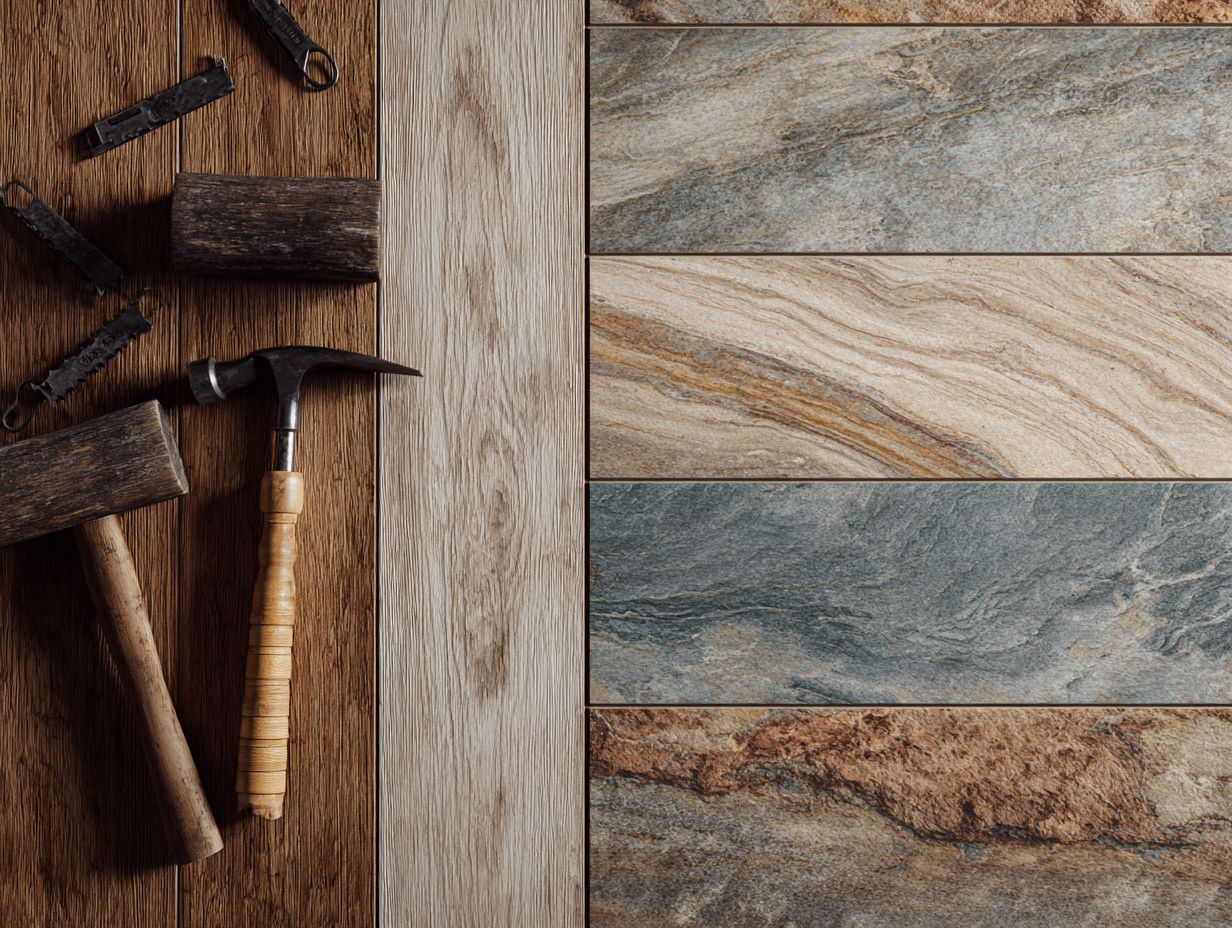
The wear layer thickness significantly influences the durability and lifespan of luxury vinyl flooring, especially in high-traffic areas.
For residential use, a wear layer of 12 mil to 20 mil is typically sufficient, providing around 10-15 years of durability.
In commercial settings, opt for a thicker layer of 20 mil to 30 mil, which can last 15-25 years or more, depending on foot traffic.
For example, a 20 mil wear layer is ideal for busy retail environments, while a 30 mil layer might be necessary for places like medical facilities.
Always consider the specific environment and anticipated usage when selecting your flooring.
Resistance to Water and Moisture
LVP and LVT can handle water well, making them excellent options for places like bathrooms and kitchens that frequently get wet.
These flooring options feature a tough, watertight core that effectively prevents moisture absorption, ensuring durability in high-traffic areas where pets may cause spills.
For example, LVP can handle being in water for up to 100 hours without bending, which makes it popular for homes with pets. The top layer contains a protective finish that resists scratches, enhancing its longevity.
When selecting these materials, look for options with a high wear layer thickness (20 mil or more) to guarantee optimal performance in wet conditions.
Ease of Cleaning
Luxury vinyl flooring is celebrated for its easy maintenance, requiring simple cleaning routines to maintain its beauty.
To keep your luxury vinyl flooring looking new, start with regular sweeping or vacuuming to remove dirt and debris.
For deeper cleaning, use a damp mop with a solution of warm water and a few drops of dish soap. Avoid harsh chemicals or waxes, as they can damage the finish.
Also, place mats at entryways to minimize grit.
For clustered stains, apply a mixture of vinegar and water for effective removal. This routine helps prolong the life and luster of your flooring.
Cost Comparison
Comparing the cost of LVP and LVT is important for planning your flooring expenses, as each has different cost considerations.
Initial Cost of LVP vs LVT
Initial costs for LVP typically range from $2 to $7 per square foot, while LVT generally falls between $2.50 and $8 per square foot, depending on quality and brand.
When selecting between LVP and LVT, consider installation costs and maintenance. For instance, LVP often has lower installation fees since it’s usually a click-lock system, averaging around $1 to $3 per square foot.
In contrast, LVT may require professional installation, increasing costs to about $2 to $5 per square foot. Think about longevity; LVT is generally more durable, leading to potential long-term savings.
Look into Coretec for quality luxury vinyl planks or MSI Surfaces for luxury vinyl tiles to see choices for long-lasting and good-looking designs.
Long-term Value and Lifespan
Buying luxury vinyl flooring can increase your home’s value over time because it is strong and looks good.
Typically, luxury vinyl planks (LVP) and luxury vinyl tiles (LVT) have an expected lifespan of 10 to 25 years, depending on quality and maintenance. Higher quality options often provide better value retention, as they resist wear and fading more effectively.
For homeowners, the return on investment (ROI) can be substantial; studies suggest LVP and LVT can yield a 70% to 80% ROI upon resale.
To help your floors last longer and keep their value, pick well-known brands like CoreTec or Shaw, and make sure they are installed correctly and taken care of regularly.
Comfort and Sound Insulation
Comfort and noise reduction are important factors in choosing flooring, as they influence how a room feels and sounds.
Underfoot Comfort
Luxury vinyl flooring provides an appealing underfoot comfort that surpasses traditional hardwood and tile options.
This comfort stems from its multi-layer construction, typically featuring a thick wear layer, high-density core, and a soft foam backing.
For example, LVP (Luxury Vinyl Plank) often includes a soft layer that reduces noise and provides comfort when standing, making it ideal for kitchens and living rooms.
In contrast, LVT (Luxury Vinyl Tile) offers a similar cushioned effect and is perfect for bathrooms and laundry areas.
Both options create a warm, inviting atmosphere while providing the durability needed to withstand daily wear and tear in residential spaces.
Sound Absorption Capabilities
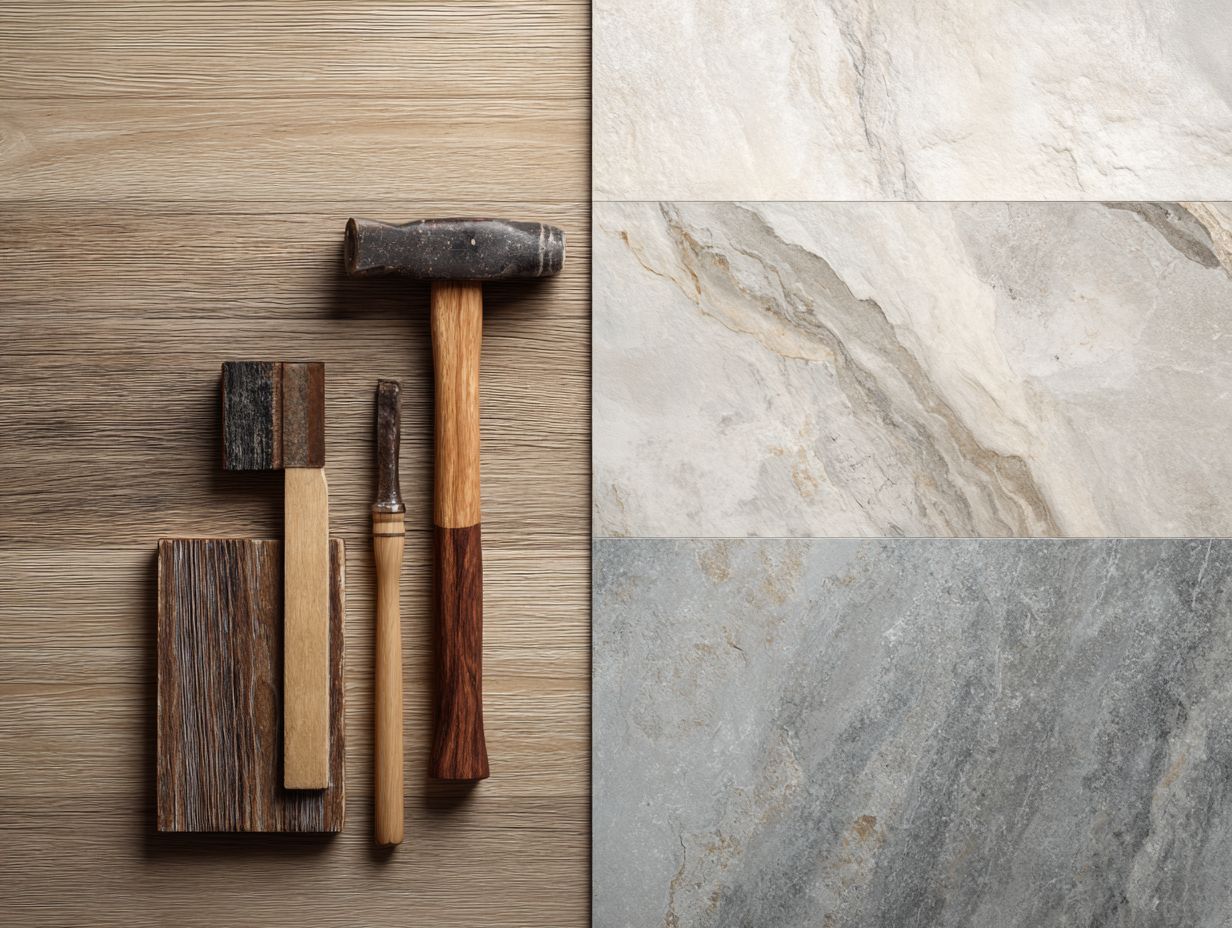
The sound absorption capabilities of luxury vinyl floors contribute to a quieter home environment, enhancing comfort levels.
This sound dampening is achieved through multiple layers in luxury vinyl flooring. For example, the main layer often contains materials that absorb sound, reducing noise from footsteps. This is perfect for homes with multiple floors where noise can easily move from one floor to another.
Using a layer beneath the flooring can help decrease noise, which is perfect for apartments or condos where silence is important. Places like recreational areas or home offices also gain because the floor reduces echoes, helping people concentrate and unwind.
Environmental Impact
Thinking about how flooring affects the environment matters more and more to homeowners who care about being eco-friendly. A growing eco-conscious trend is the adoption of reclaimed wood flooring, which offers sustainable sourcing options.
Vinyl Flooring Market Analysis
Vinyl Flooring Market Analysis
Market Expansion and Information: Increase in Market Worth
Market Expansion and Details: Area Market Proportion
Market Expansion and Information: Effects of Construction
The Vinyl Flooring Market Analysis provides a detailed look at the market’s growth and regional trends, as well as effects on the construction industry. This data illustrates the resilience and potential expansion of the vinyl flooring sector over the coming decade.
Market Growth and Insights suggest a significant upward trend, with the vinyl flooring market value set to rise from $36.63 billion in 2023 to a projected $66.94 billion by 2032. This increase shows a strong average yearly growth rate (CAGR) of 6.8% from 2024 to 2032, showing a strong market trend and growing consumer interest in vinyl flooring because it is flexible, long-lasting, and looks good.
- Regional Market Share: The Asia Pacific region commands a substantial 33.93% market share in 2023, equating to a market value of $12.43 billion. This dominance is attributed to rapid urbanization, rising construction activities, and growing consumer spending in countries like China and India. The region’s large market share highlights its key role in increasing global market growth.
- Construction Impact: The data highlights an 85% incidence of contractor delays in July 2020, with a notable 40% reduction in project delays from April to July. These figures suggest that while the construction industry faced significant disruptions, project timelines have improved significantly in a short time, possibly due to new strategies and recovery efforts in the sector.
Overall, the Vinyl Flooring Market Analysis indicates a lively and growing market. The growth is driven by both regional demand and recovery in the construction sector, setting the stage for continued expansion and innovation in vinyl flooring products and applications.
Recyclability and Sustainability
Luxury vinyl flooring is primarily made from PVC, which raises questions about its recyclability and sustainability practices.
While LVP and LVT have limited recyclability due to their PVC composition, some manufacturers are adopting sustainable practices.
Brands like Karndean and Shaw Industries emphasize using recycled materials and developing take-back programs to mitigate waste.
For environmentally conscious consumers, it’s essential to look for industry certifications such as FloorScore or GreenGuard that reflect low emissions and sustainable production methods.
Looking into local recycling choices can prevent old vinyl flooring from ending up in landfills, supporting a more sustainable economy.
Indoor Air Quality Considerations
Indoor air quality is a critical concern when selecting flooring materials, as some can emit harmful substances over time.
Luxury vinyl flooring can release volatile organic compounds (VOCs) due to its PVC content, leading to potential health risks like respiratory issues.
To mitigate these concerns, opt for low-VOC products from reputable brands. Look for certifications such as FloorScore or GreenGuard, which signify better indoor air quality.
Consider brands like Karndean and Shaw that emphasize eco-friendliness in their manufacturing processes. Ensuring proper ventilation during installation can also help reduce initial emissions, further protecting indoor air quality.
Choosing the Right Option for Your Space
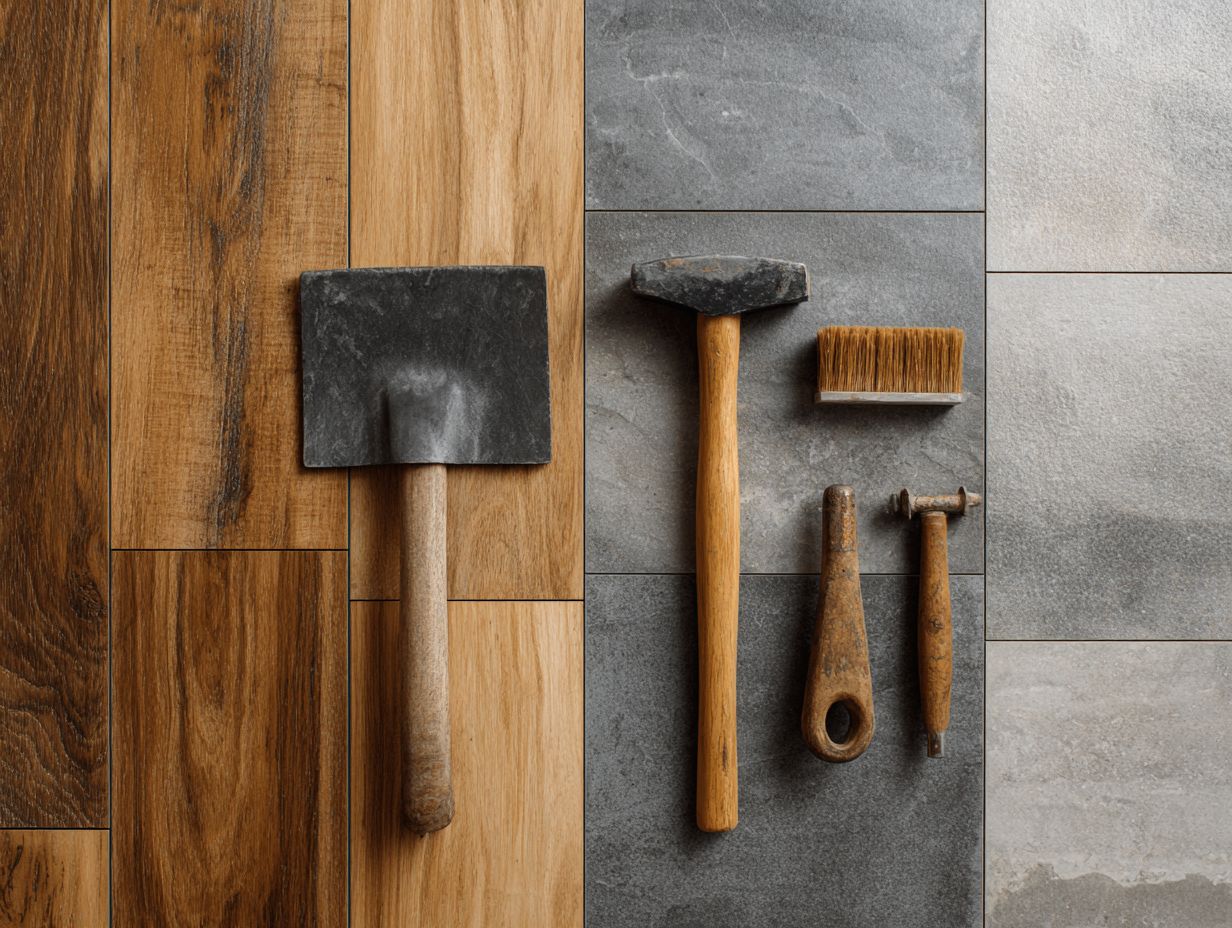
To select the best flooring for your space, consider factors such as room function, traffic patterns, and personal style preferences.
For living rooms and dining areas, luxury vinyl planks (LVP) offer a blend of durability and aesthetics, mimicking hardwood at a lower cost. They are durable for high-traffic places.
In contrast, luxury vinyl tiles (LVT) shine in kitchens and bathrooms due to their water resistance. Consider your home’s layout: visualize LVP in expansive areas for a seamless look, while using LVT in functional zones where moisture is a concern.
Checking these factors helps your flooring meet your practical needs and fit your style choices.
Final Thoughts
The decision to invest in luxury vinyl flooring should be guided by budget considerations, aesthetic preferences, and lifestyle needs.
-
Begin by determining your budget, as luxury vinyl can range from $2 to $7 per square foot.
-
Next, look at various options like wood, stone, or tile styles, considering your home’s design and what you like personally.
-
For households with pets or children, choose durable, scratch-resistant options.
-
Tools like Roomvo can help visualize how various flooring types will look in your space.
-
Consider how to put them in; many high-quality vinyl choices can be installed on your own to save money, while getting a professional will make sure it looks just right.
Resources for Further Reading
If you want to learn more about luxury vinyl flooring, you can find many resources with useful information and expert advice.
Check out these trusted resources to improve your knowledge:
- The National Floor Covering Association provides a complete guide on care and installation.
- HomeAdvisor features articles that break down cost analysis and design options.
- Armstrong Flooring shares information about environmental effects and sustainability, important for consumers who care about the environment.
For those interested in understanding various flooring options, a related insight can be found in our article about hardwood flooring types and species.
Using these resources will give you important information and practical advice, helping you make better choices when picking luxury vinyl flooring.
Frequently Asked Questions
What is the difference between Luxury Vinyl Plank (LVP) and Luxury Vinyl Tile (LVT)?
Luxury Vinyl Plank (LVP) and Luxury Vinyl Tile (LVT) are both types of luxury vinyl flooring options. The main difference between the two is the shape and size of the individual pieces. LVP resembles traditional hardwood planks, while LVT mimics the appearance of natural stone or ceramic tile.
Which is more durable, LVP or LVT?
Both LVP and LVT are considered highly durable flooring options. However, LVP is a bit more resistant to scratches and dents because it is built thicker. LVT, on the other hand, is better at withstanding moisture and is less prone to warping in humid environments.
Can LVP and LVT be used in all areas of the home?
Yes, both LVP and LVT are suitable for use in any room of the home, including high-traffic areas and rooms with high levels of moisture. However, LVT might be a better choice for areas that often get wet, like bathrooms or laundry rooms.
Which is easier to install, LVP or LVT?
Both LVP and LVT can be installed using various methods, including click-and-lock, glue-down, and loose lay. However, LVT is often seen as easier to install because its tiles are smaller and lighter.
Are LVP and LVT low maintenance options?
Yes, both LVP and LVT are low maintenance flooring options. They are resistant to stains, scratches, and dents, and can easily be cleaned with just a damp mop or a mild cleaner. Both LVP and LVT are durable, meaning they need little maintenance compared to other flooring options.
Is there a significant price difference between LVP and LVT?
The cost of LVP and LVT can vary depending on the brand, quality, and style. In general, LVP costs a bit more because it is built thicker and has more detailed designs. However, the cost difference between the two is often small, and both choices give good value for your money.
